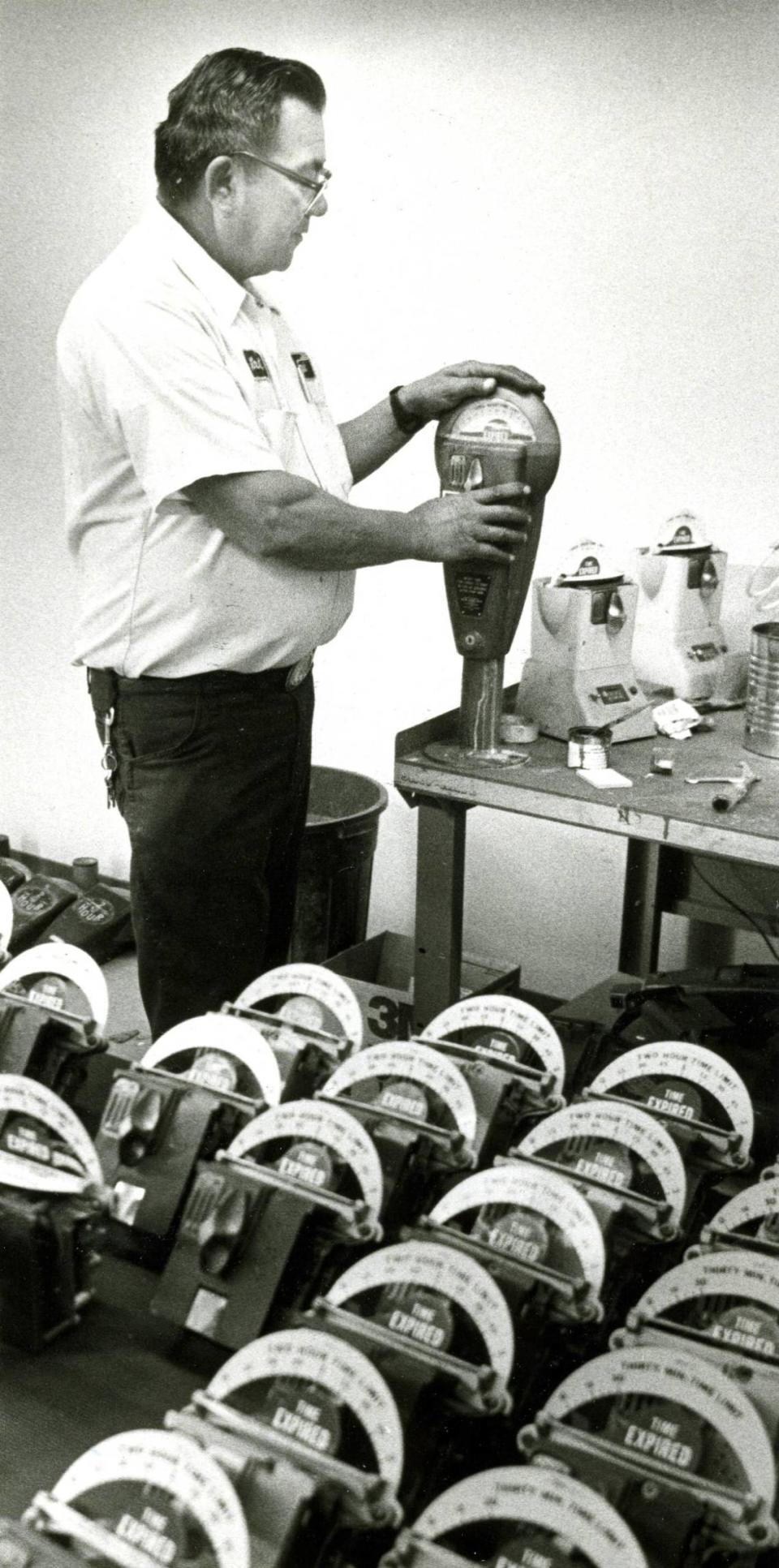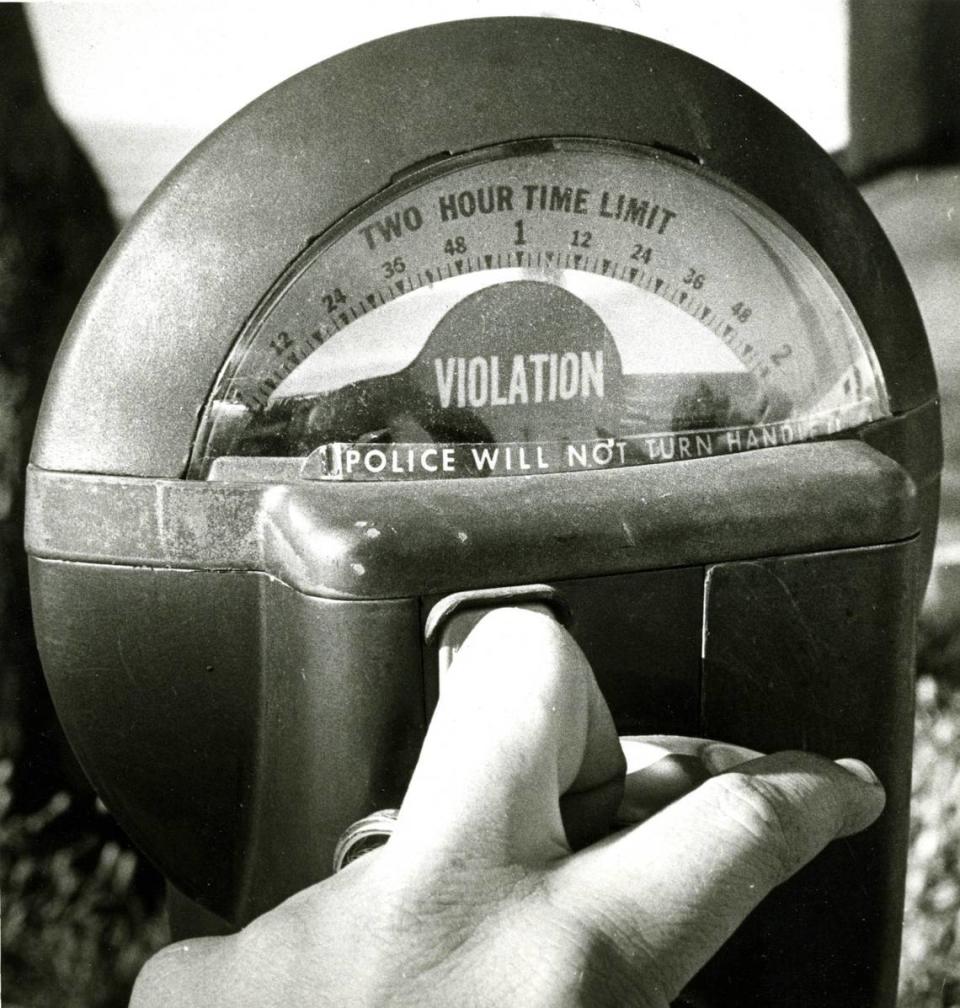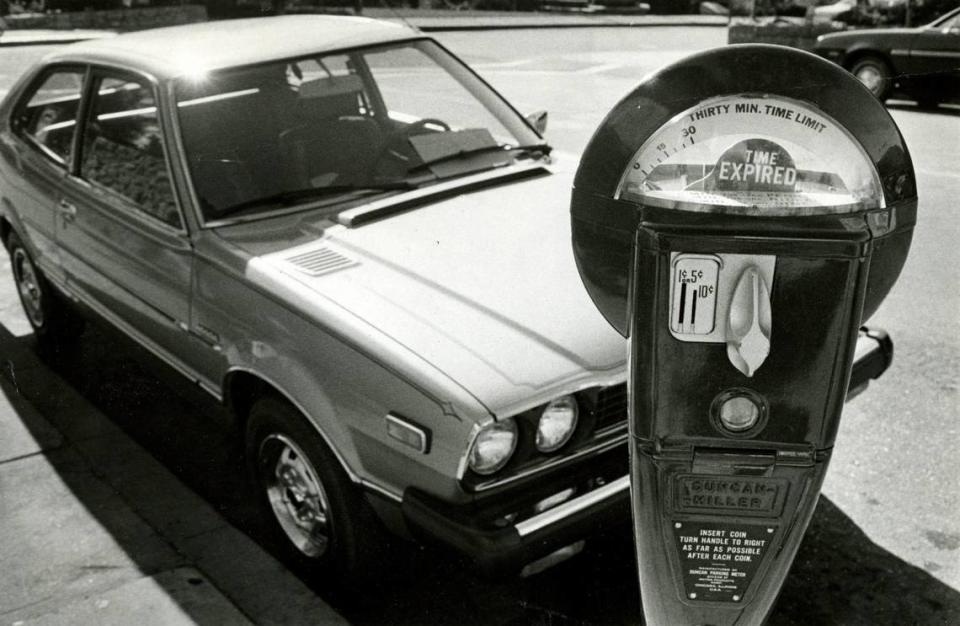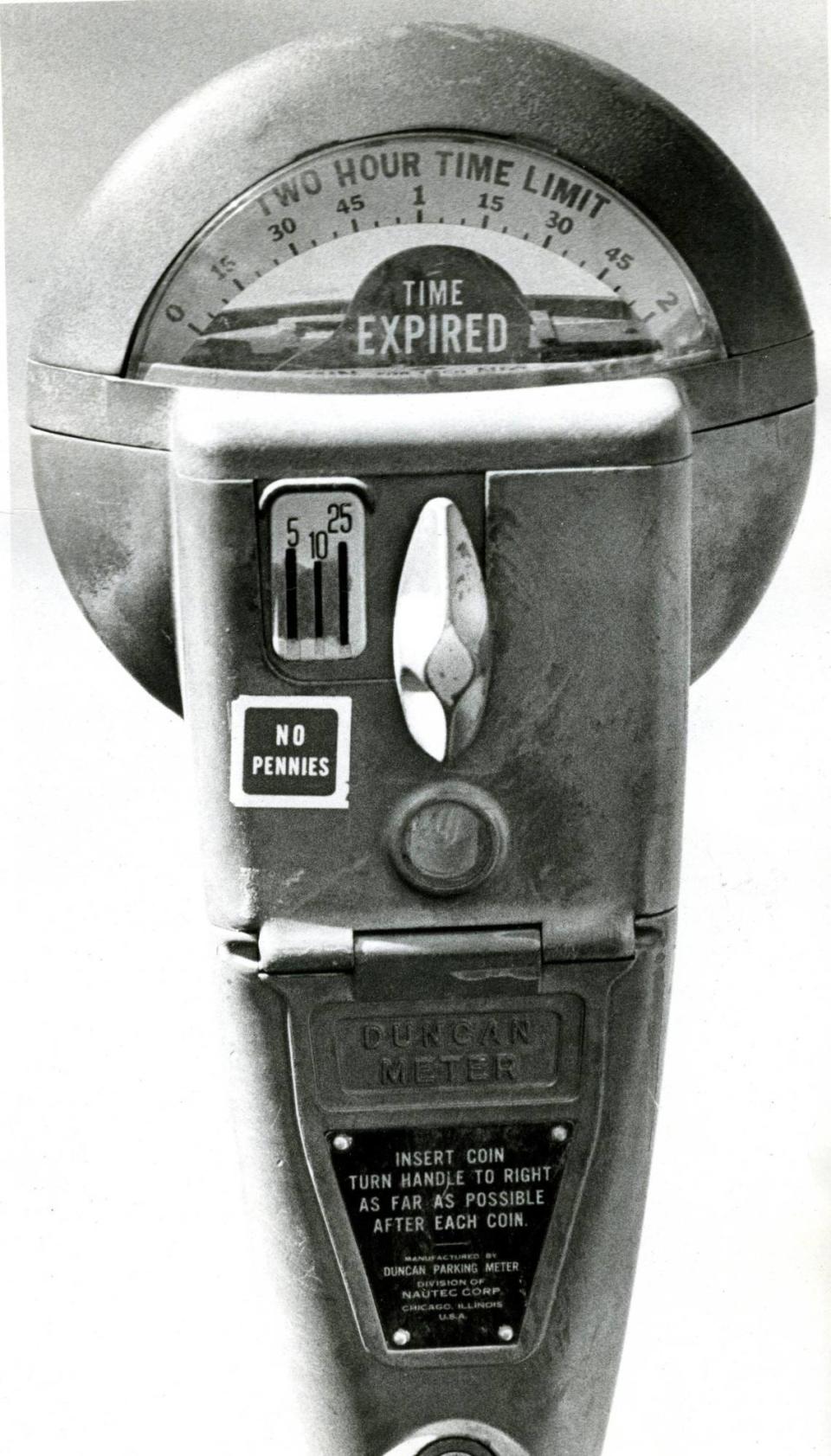You didn’t always have to pay to park in SLO. Here’s how downtown got its first meters
This just in: Humans don’t always make rational decisions — and parking meters were invented to save us from our worst impulses.
When I worked in retail downtown, several business owners and managers took up prime downtown parking spaces when they drove to work. Every couple of hours they had to run out and feed the parking meter with change from the cash register.
Our store had five employees and if we had all parked in front of the store, there would have been no parking for customers.
Americans for sure have an unhealthy obsession with parking. So much so, murders have even been committed over parking disputes.

And there are expensive trade offs to providing “free parking.”
In 1998, Donald Shoup, author of the influential urban planning book “The High Cost of Free Parking,” estimated that conservatively the United States had invested over twice as much in parking spaces as the value of the cars on the road.
And most of those parking spaces are empty most of the time.
Henry Grabar also recently authored a book, “Paved Paradise, How Parking Explains the World.”
San Luis Obispo has long been on the leading edge of tinkering with parking.
Closing Mission Plaza was considered revolutionary in 1968 because the precious 18 spaces that would be lost.
Now it is seen as a valued heart of the community, and no one protests the lost parking spaces.
Bulb outs, bike lanes, trees, rising parking fees, construction of parking garages, parklet dining and pay by app are all experiments in trying to find the balance downtown between unfettered car access and making the downtown a walkable, inviting destination.
The city doesn’t always get it right, as seen when angry public comment followed the brief erasure of the first hour of free parking in the garages.

The theory is that pricing should be structured so that there is always a space or two on the street for those that need it, while funneling others to long-term parking.
Parking meters have long been the target of rage.
An Associated Press story from April 23, 1984, said a gunman in Anchorage, Alaska, was shooting them.
The publication “Parking Today” records that cowpokes on horseback lassoed and pulled down parking meters in Paso Robles in the early 1980s — though I have struggled to find a corroborating article in the Telegram-Tribune.
A Feb. 9, 1949, United Press article datelined San Bernardino said, “some embittered woman put her wedding ring in a downtown parking meter, police reported today. She can get the ring back by paying the nickel she should have put in the slot.”
The first U.S. parking meters were installed in Oklahoma City in 1935.
Meters still took pennies when I moved to San Luis Obispo in the late 1970s; price inertia is a powerful thing.
But even Santa gets parking tickets.
A 1978 story detailed how a downtown Santa hoped a cardboard note under the window would prevent parking violations. Spoiler alert, the threat of coal in the stocking is no match for an expired parking meter.
San Luis Obispo debated the machines for a few years and the Sept. 30, 1947, Telegram-Tribune marked the dawning parking meter age.

Parking Meter Posts Arrive; Installation Is Due Soon
Parking meters are due to be installed and in operation in San Luis Obispo within the next three weeks, City Clerk Jack Brown announced today. Under terms of the city’s contract with the Dual Parking Meter Co., which is furnishing and installing the equipment, these conditions are due to be fulfilled within 60 days of the contracts signing on Aug. 18, Brown recalled.
Metal posts to support the 420 coin operated meters have already arrived here, and the meter heads were shipped Sept. 19 from Canton, Ohio, it was learned today.
Engineer Due
A traffic engineer affiliated with the parking meter firm is expected in San Luis Obispo within the next few days to make final preparations for the equipment’s installation.
Expected to greatly increase traffic turnover on the more crowded downtown streets, assuring greater ease in finding curb parking space for motorists the devices will be in operation from 9 a.m. to 6 p.m. daily, except Sundays and holidays.
Providing ample space for maneuvering newer model cars with long wheel bases into the curbs, there will be 22 feet of parking space for each meter, under terms of the city ordinance covering the equipment’s purchase.
A charge of one cent for each 12 minutes parking, or five cents per hour will be standard for the meters, with a motorist depositing either one, two, three or four pennies, or a nickel, depending on the length of his intended stay.
Recalling the experience of other cities comparable to San Luis Obispo, which have adopted parking meters, some local city officials believe that the meters may pay for themselves in approximately 18 months after beginning operation.
Pay for Meters
After the equipment pays itself out, all revenue from this source will go to the city. It is expected that such revenue will be used entirely for street improvement and repair.
Purchased on a six months trial basis, the meters will be removed at no cost to the city, if found unsatisfactory at the end of the trial period.
Total outlay for equipment will be $32,340 at a per unit cost of $77 for the 420 meters. The city pays nothing down for the meters, and payments come entirely from revenue.


